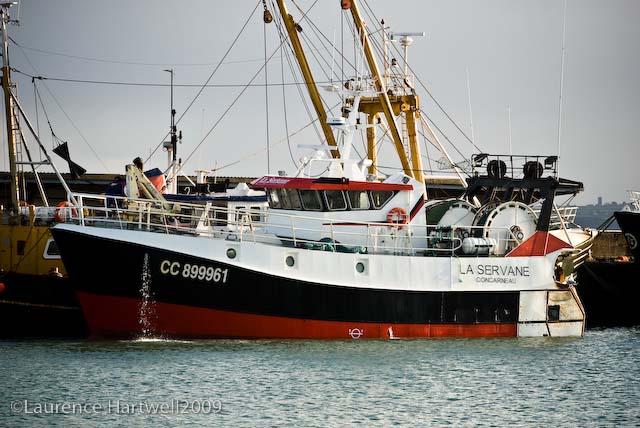Hi folks
I regularly receive reports of Yellowfin Tuna Thunnus albacares being caught, landed or stranded. However, they usually turn out to be Bluefin Tuna Thunnus thynnus, the confusion arising from the finlets along the back from the dorsal fins to the base of the tail, which are yellow in the three larger species of tuna which can occur in British and Irish waters. These are dull yellow in Bigeye Tuna Thunnus obesus, yellow in bluefins and bright yellow in yellowfins. Adult tunas can be identified with a bit of experience – yellowfins have long sickle-shaped second dorsal and anal fins; bigeyes have a moderately long pectoral fin and larger eye; bluefins have a short pectoral fin. However, in younger tuna these features are not so distinctive and identification can be very difficult. A gill raker count will separate bluefin (34-43) from the other two (YF 26-34; or BE 23-31).
OnWednesday 23rd November 2011 Mr Nigel Jones found and photographed a 6’ (1.8 m) tuna at, near Porthcawl, Dunraven Bay South Wales . The photographs showed it to be a yellowfin, that had been washed up dead. Unfortunately, it was at the foot of a high cliff and it was not possible to collect the fish; also when Mr Jones returned today to take some measurement and further examine the animal, it could not be found. Presumably it had been taken out to sea again by the present exceptional tides.
This is the second yellowfin that I am aware of to have been recorded in, and the third in British and Irish waters. The first of the previous specimens was found stranded on the mudflats of the Dwyryd Estuary, Wales, on 15 October 1972 (Wheeler, 1985) and the second, a juvenile, was caught c. 110 km off Land’s End, Cornwall on 7 August 2006 (which I initially misidentified as a bigeye). Only three bigeyes have been identified - Newlyn 1985, Christchurch 2004 and Wales (Llanelli) 2006. Bluefin, whilst being uncommon is a much more frequently encountered fish with a number being reported this year along the south coast from Portland to west of the Isles of Scilly. Burry Port
[All photos are © Nigel Jones]
Doug Herdson
Marine Fish Information Services
Plymouth














